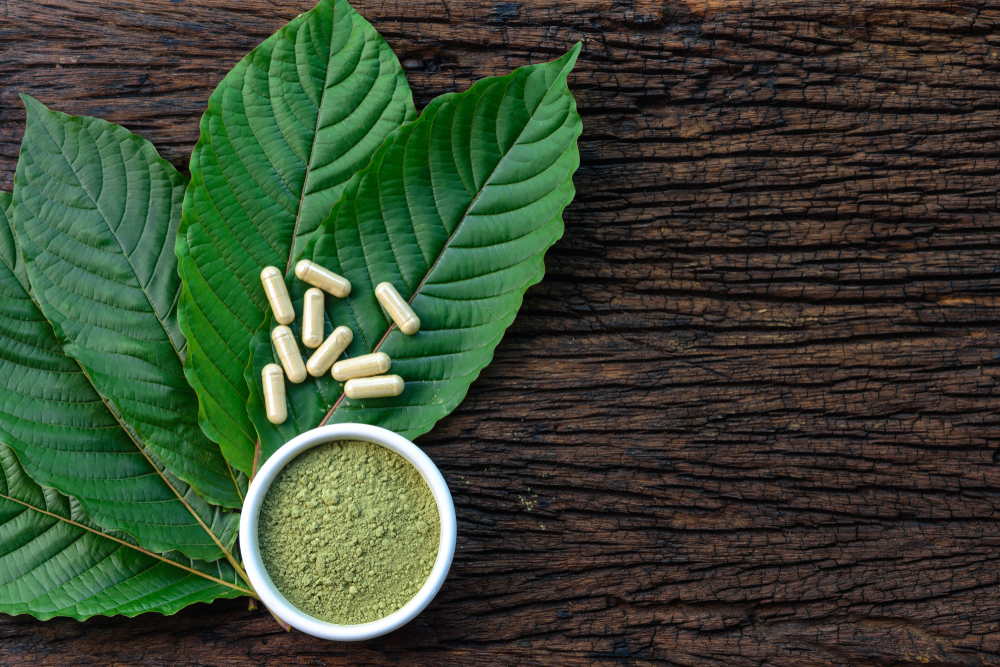Kratom, a plant native to Southeast Asia, has gained popularity in recent years for its purported benefits, including pain relief, relaxation, and mood enhancement. However, as its use has spread, so have concerns about its potential for addiction and the risks associated with withdrawal. In this blog, we’ll explore whether kratom can lead to addiction, the signs and symptoms of kratom withdrawal, and what you need to know if you or someone you love is struggling with kratom dependence.

Can You Become Addicted to Kratom?
Yes, it is possible to become addicted to kratom. Kratom contains active compounds called alkaloids, particularly mitragynine and 7-hydroxymitragynine, which interact with the brain’s opioid receptors. These interactions can produce effects similar to opioids, such as pain relief, euphoria, and sedation. While kratom is not classified as an opioid, its effects on the brain can lead to dependence over time.
Regular use of kratom can cause the brain to adapt to its presence, leading to tolerance (needing more of the substance to achieve the same effects) and dependence (needing the substance to function normally). When dependence develops, stopping kratom use can trigger withdrawal symptoms, which can be uncomfortable and, in some cases, severe.
Signs and Symptoms of Kratom Withdrawal
Kratom withdrawal occurs when someone who has been using kratom regularly suddenly stops or significantly reduces their intake. The severity of withdrawal symptoms can vary depending on factors such as the duration of use, the amount consumed, and individual physiology. Common symptoms of kratom withdrawal include:
- Physical Symptoms:
- Muscle aches and pains
- Nausea and vomiting
- Sweating and chills
- Fatigue and lethargy
- Tremors or shaking
- Insomnia or disturbed sleep
- Runny nose and watery eyes
- Psychological Symptoms:
- Anxiety and irritability
- Depression and mood swings
- Cravings for kratom
- Difficulty concentrating
- Restlessness
- Gastrointestinal Issues:
- Abdominal cramps
- Diarrhea
- Loss of appetite
- Severe Cases:
- In rare instances, individuals may experience more severe symptoms, such as hallucinations or extreme agitation.
The timeline for kratom withdrawal typically begins within 12 to 24 hours after the last dose and can last for several days to a week. In some cases, psychological symptoms like depression and cravings may persist for weeks or even months, especially in individuals who have used kratom heavily or for an extended period.

Why Does Kratom Withdrawal Happen?
Kratom withdrawal occurs because the brain has become reliant on the substance to maintain balance. When kratom is no longer introduced into the system, the brain struggles to regain equilibrium, leading to the symptoms described above. The withdrawal process is similar to that of opioids, though it is often described as less severe.
Is Kratom Dangerous?
While kratom is often marketed as a natural and safe alternative to opioids, it carries significant risks. In addition to the potential for addiction and withdrawal, kratom use has been linked to serious side effects, including:
- Liver damage: Some users have reported liver toxicity after using kratom.
- Cardiovascular issues: Kratom can increase heart rate and blood pressure, posing risks to those with pre-existing heart conditions.
- Contamination: Many kratom products are unregulated and may be contaminated with harmful substances like heavy metals or bacteria.
- Overdose: While rare, there have been reports of deaths associated with kratom use, particularly when combined with other substances.
The U.S. Food and Drug Administration (FDA) has issued warnings about the risks of kratom, citing concerns about its safety and potential for abuse.
How to Stop Using Kratom Safely
If you or someone you know is struggling with kratom dependence, it’s important to seek professional help. Quitting kratom “cold turkey” can be challenging due to the withdrawal symptoms, and a supervised approach is often the safest and most effective way to stop using the substance.
- Medical Detox: A medically supervised detox can help manage withdrawal symptoms and ensure your safety throughout the process. Healthcare providers may use medications to alleviate discomfort and monitor your progress.
- Therapy and Counseling: Behavioral therapies, such as cognitive-behavioral therapy (CBT), can help address the underlying reasons for kratom use and develop healthier coping mechanisms.
- Support Groups: Connecting with others who have experienced similar struggles can provide encouragement and accountability during recovery.
- Aftercare Planning: Long-term recovery often requires ongoing support, such as outpatient treatment, counseling, or participation in support groups.

Final Thoughts
Kratom may offer temporary relief for some individuals, but its potential for addiction and the risks associated with withdrawal make it a substance to approach with caution. If you or a loved one is experiencing kratom dependence, reaching out for professional help is the first step toward recovery. With the right support and treatment, it is possible to overcome kratom addiction and regain control of your health and well-being.
If you’re ready to take that step, consider reaching out to a trusted addiction treatment center like Knoxville Recovery Center for guidance and support. Recovery is a journey, but you don’t have to face it alone. Contact us or call us today to learn more about our personalized addiction recovery services.








